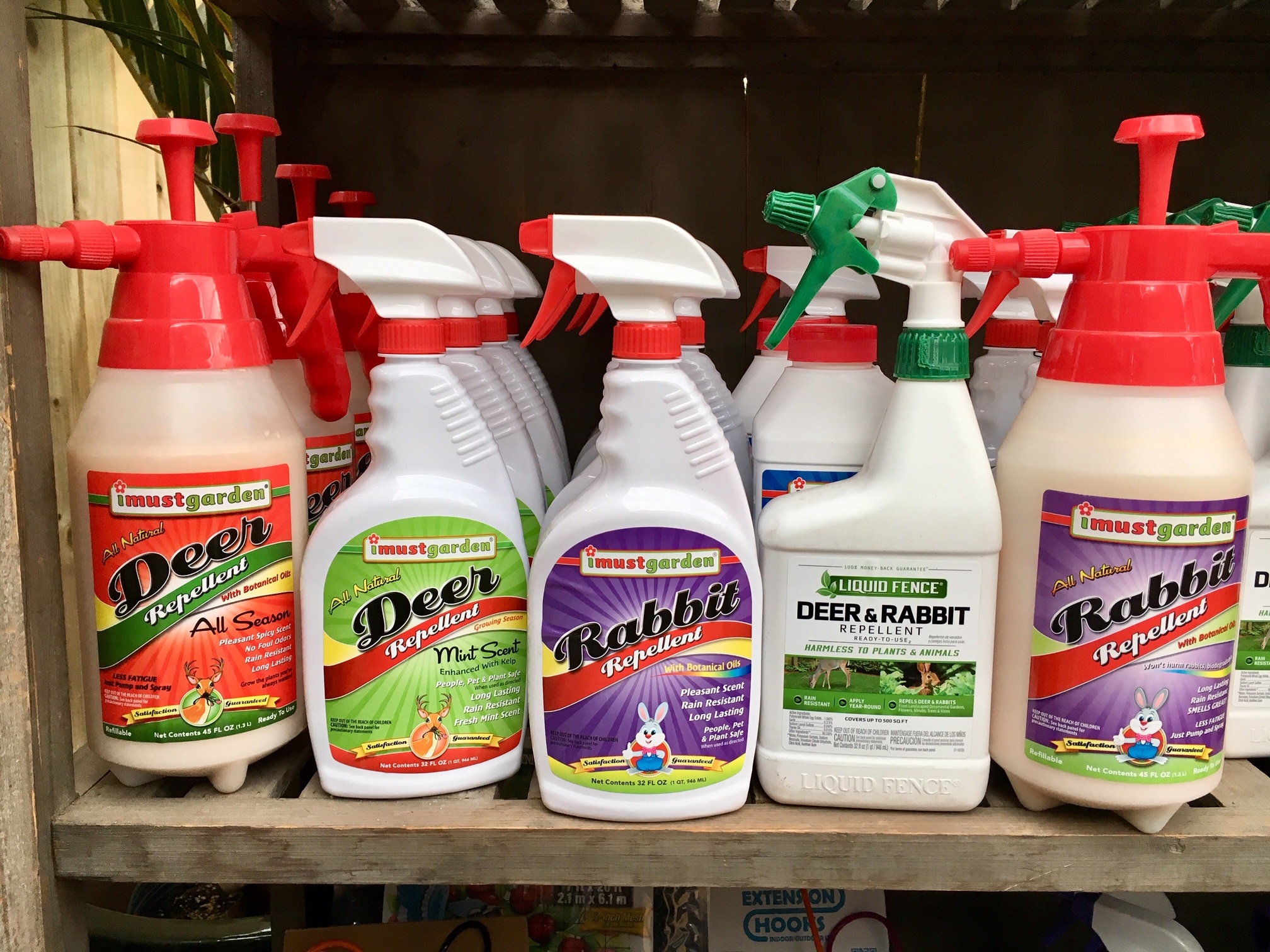Mixed tactics work best
Despite gardeners’ best efforts, deer will damage landscape plantings. The two questions most frequently asked are: “What can I plant that deer won’t eat?” and “How can I stop deer & rabbits from browsing on my favorite plants?” The simple answers are that there are very few truly deer-proof or rabbit-proof plants and that, if they are hungry enough, repellents, scare devices and gadgets, and poorly constructed physical barriers will all fail. With a little diligence and a mix of strategies, you can achieve success. In the end, the only fool-proof method of resistance is a strong fence. Consider constructing a barrier to keep deer and rabbits from the most important plants in your landscape. In the meantime, consider the following suggestions.
EARLY SPRING:
Hang sachets filled with Fertilome organic fertilizer around the area, or apply organic fertilizer (at half the recommended rate) around emerging bulbs and spring plants. Reapply a month later. Applications of liquid foliar repellents, such as Liquid Fence or I Must Garden Repellent, which will work equally well; just don’t apply them in late summer or fall.
LATE SPRING/SUMMER:
Apply liquid spray repellents like Liquid Fence or I Must Garden, an odor-based repellent every two to three weeks once plants have fully leafed out. Especially spritz flower buds as they appear. The odor based repellents use a mixture of rotten eggs smell and spicy plant oils to deter critters. Or apply a blood -derived product like Blood Meal granules around your flower bed to create a barrier around your plants.
LATE SUMMER/FALL:
Continue your summer program. Evaluate environmental and biological factors (like the abundance of food sources or the increase in deer numbers) to determine if you should rely on repellents or physical barriers, like fencing or burlap wraps, for the winter months.
WINTER:
Apply a blood-derived spray or granular repellent like Blood Meal during the dormant season (once in November and again in January). Odor- or taste-based repellents can be less effective during cold temperatures.

